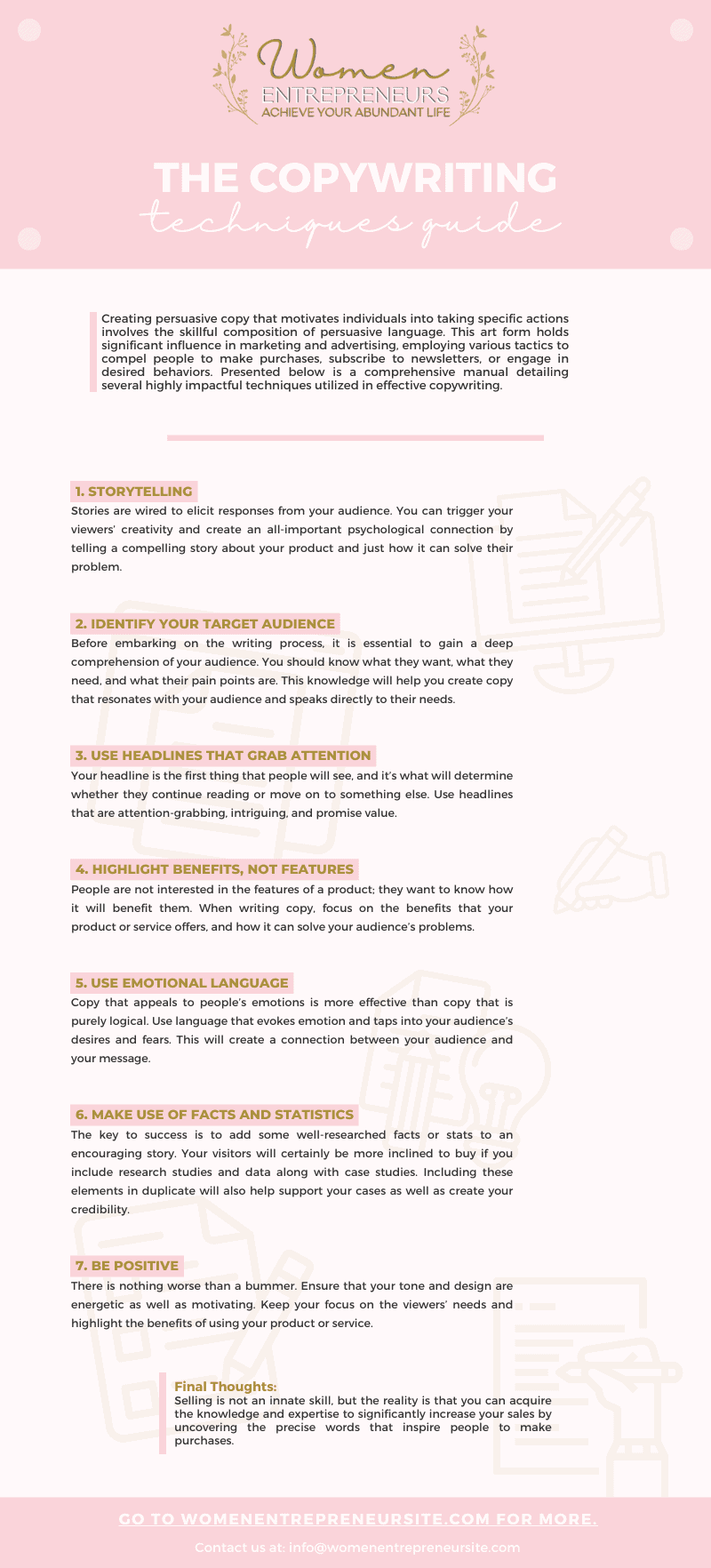In the realm of professional growth, there comes a pivotal moment for many individuals when the…
The Copywriting Techniques Guide

Creating persuasive copy that motivates individuals into taking specific actions involves the skillful composition of persuasive language. This art form holds significant influence in marketing and advertising, employing various tactics to compel people to make purchases, subscribe to newsletters, or engage in desired behaviors. Presented below is a comprehensive manual detailing several highly impactful techniques utilized in effective copywriting.
It is always a good idea to develop your copywriting skills, whether you are a beginner or an experienced copywriter. It is important to adhere to copywriting strategies to master efficient and outstanding copywriting, and some copywriting methods never go out of style.
>> Copywriting Secrets
Copywriting involves skillfully composing persuasive language across diverse channels, including online platforms, physical materials, videos, direct mail, Facebook, and even in live presentations. Its purpose is to elicit actions from individuals, whether it’s clicking on a link, making a call, or making a purchase.
In today’s fast-paced and attention-deprived business landscape, heavily influenced by social media, two significant facts regarding the impact of your copywriting skills on generating sales messages are evident:
- Exceptional Copywriting: Remarkable lifestyle, abundant wealth, and personal freedom!
- Inadequate Copywriting: Financial struggle and bleak prospects!
Mastering the art of effectively conveying the right words on paper or online is the single most lucrative skill that anyone can acquire.
1. Storytelling
Stories are wired to elicit responses from your audience. You can trigger your viewers’ creativity and create an all-important psychological connection by telling a compelling story about your product and just how it can solve their problem.
2. Identify your target audience
Before embarking on the writing process, it is essential to gain a deep comprehension of your audience. You should know what they want, what they need, and what their pain points are. This knowledge will help you create copy that resonates with your audience and speaks directly to their needs.
3. Use Headlines that Grab Attention
Your headline is the first thing that people will see, and it’s what will determine whether they continue reading or move on to something else. Use headlines that are attention-grabbing, intriguing, and promise value.
4. Highlight Benefits, Not Features
People are not interested in the features of a product; they want to know how it will benefit them. When writing copy, focus on the benefits that your product or service offers, and how it can solve your audience’s problems.
5. Use Emotional Language
Copy that appeals to people’s emotions is more effective than copy that is purely logical. Use language that evokes emotion and taps into your audience’s desires and fears. This will create a connection between your audience and your message.
6. Make use of facts and statistics
The key to success is to add some well-researched facts or stats to an encouraging story. Your visitors will certainly be more inclined to buy if you include research studies and data along with case studies. Including these elements in duplicate will also help support your cases as well as create your credibility.
7. Be Positive
There is nothing worse than a bummer. Ensure that your tone and design are energetic as well as motivating. Keep your focus on the viewers’ needs and highlight the benefits of using your product or service.





